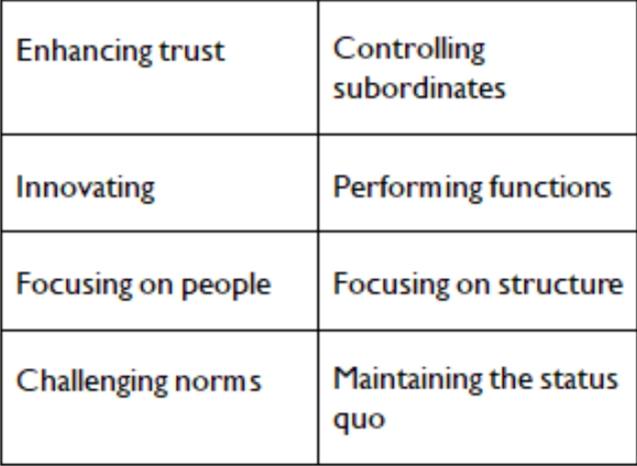Putting the art of authentic leadership into practice
To be a good manager, a person has to also be a good leader
Mostafa Sayyadi //February 3, 2021//


Putting the art of authentic leadership into practice
To be a good manager, a person has to also be a good leader
Mostafa Sayyadi //February 3, 2021//
Management has been highlighted as an authority relationship to maintain the status quo through coordinating and controlling subordinate activities.
This is where scholars part ways. Once the status quo is mentioned, it appears that management is stagnant and overly consuming in nature.
It is not, management and leadership are one in the same and to be a good manager a person has to also be a good leader.
The following table summarizes some distinctions between leadership and management that have been posited by scholars over the past ten years or so by very prominent academics. The table indicates a dichotomy of management and leadership but anyone can see that being both is much more important than being simply one or the other.
The table above is an important to show the highlights of leadership versus management but there are times when everything in the table on both sides are important functions of managers.
Although the current definitions on the concept of leadership and management are somewhat different, these idealized definitions provide various viewpoints about leadership that could positively contribute to define the concept of leadership.
Let us now define this thing called leadership as influenced interactions with groups of followers to implement changes and achieve the determined goals. That definition sounds a lot like management and it should be because as mentioned earlier, leadership is a function of management.
This controversy among academics has taken on new form. Scholars are experts in management and leadership but very few take pride in being scholars of both except for Fayol who would fall into the category of a management historian.
The key take-away for executives is that authentic leadership has increasingly become one of the most dominant paradigms today and will be used by many companies around the globe.
Let us look at authentic leaders and determine their competencies aimed at answering the question of how executives can become better at what they do by using the seven practices of authentic leadership. Seven practices have been determined for authentic leadership:
- Positive psychological capital
It is important for executives to develop a positive work climate in which employees more effectively contribute to a company’s performance and competitive advantage. - Positive moral perspective
Executives must have the desirable expertise about the authentic decision-making process, which identifies moral dilemmas, and then evaluates and selects the best available alternative to be implemented. - Self-awareness
Executives need to understand that authentic leaders continually understand their own beliefs, strengths, desires, values, and aspirations. - Leadership process
Authentic leaders can distinguish the processes and mechanisms whereby an authentic leader influences his/her followers. These leaders can effectively influence their followers through taking various processes such as positive social exchange. - Self-regulation
Executives should be aware of self-awareness and self-regulation by which authentic leaders effectively align their core values and individual interests with institutional interests and their practices. In fact, a strong alignment can be achieved in values and goals by using a transparent process between leaders and followers. - Follower development
Executives are aware that an authentic leader takes a coaching role for transforming and developing people. - Organizational context
It is important for executives to develop effective workplaces that promote the depth and range of knowledge access and sharing and provide equal opportunity for all employees at various levels of the company in order to actively respond to the constant changes occurring in external environment.
This article raises vital questions as to how executives can effectively lead companies with authenticity in today’s hyper-competitive business environment.
This article portrays a more detailed picture of the authentic leadership within organizations that have been mentioned but not placed in a set of practices based on acting and doing in the past.
 Mostafa Sayyadi works with senior business leaders to effectively develop innovation in companies, and helps companies—from start-ups to the Fortune 100—succeed by improving the effectiveness of their leaders. He is a business book author and a long-time contributor to business publications and his work has been featured in top-flight business publications.
Mostafa Sayyadi works with senior business leaders to effectively develop innovation in companies, and helps companies—from start-ups to the Fortune 100—succeed by improving the effectiveness of their leaders. He is a business book author and a long-time contributor to business publications and his work has been featured in top-flight business publications.


























